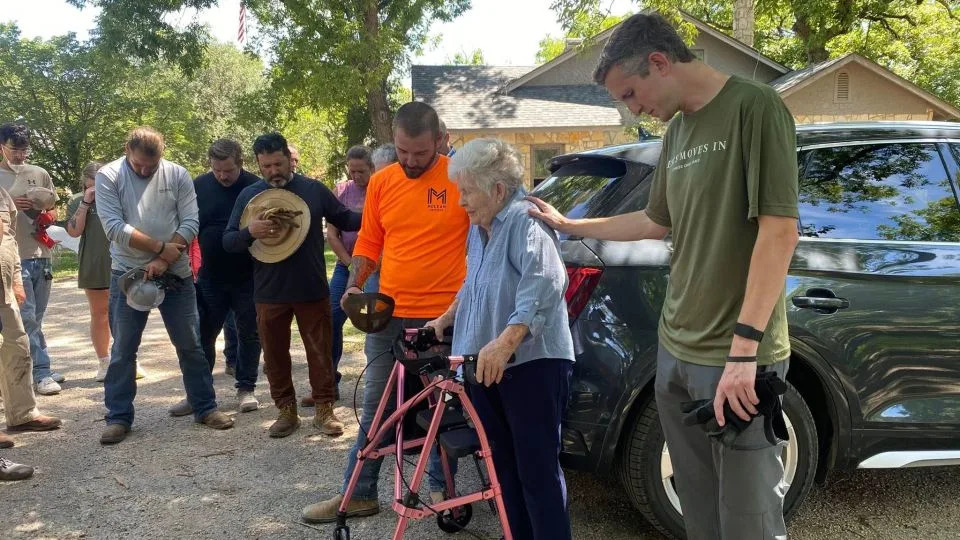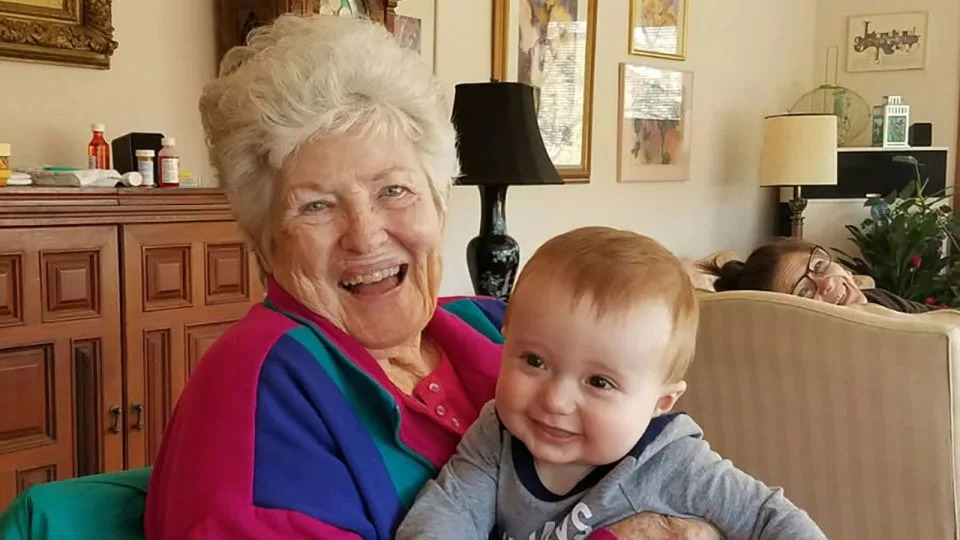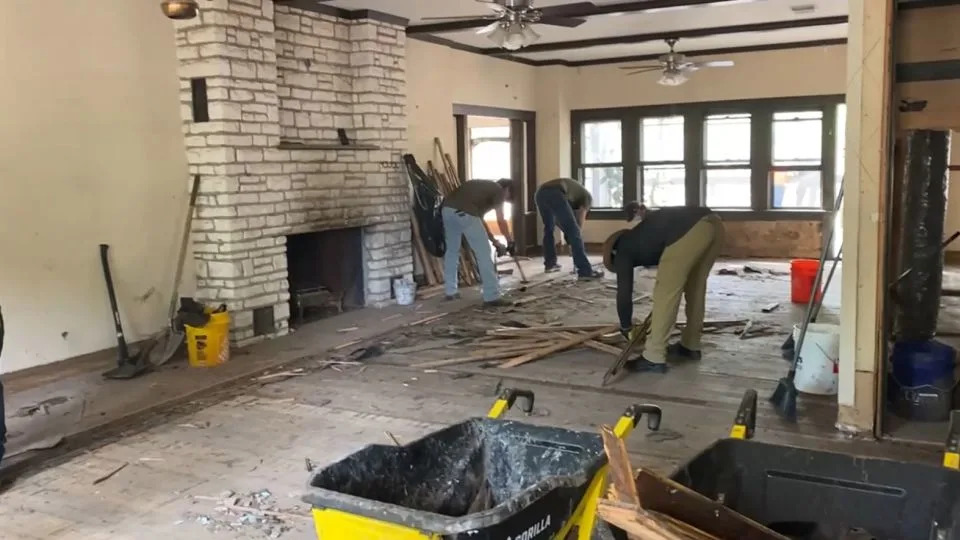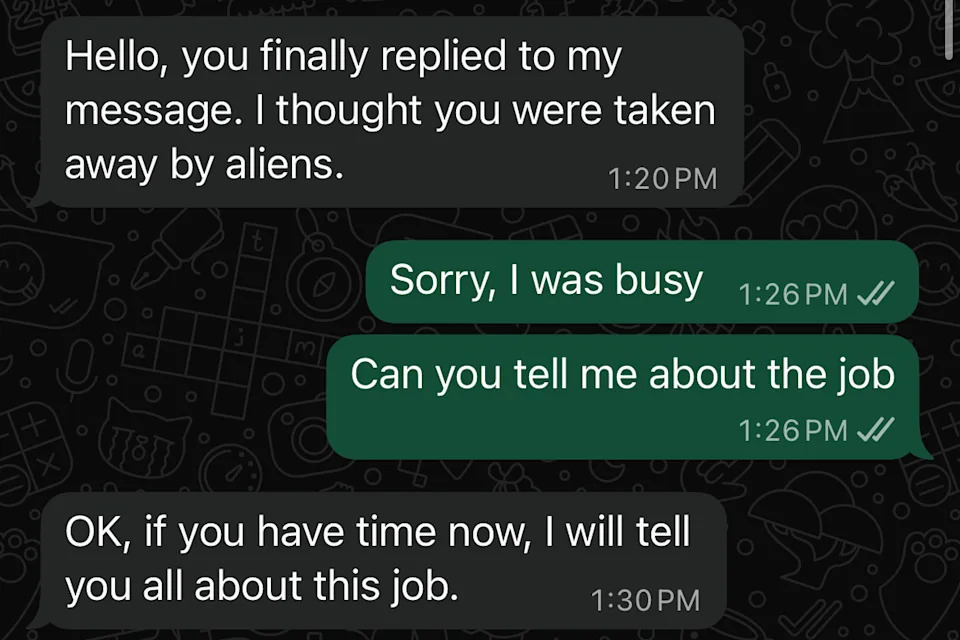
Nine-year-old Cole Morris cowered in between his grandfather and seven of their family members, whispering prayers as rising floodwaters lapped furiously at the stairs of their attic.
“Are we going to die?” Cole asked his grandpa, his brown eyes wide with panic.
Barry Adelman thought they might. But he swallowed the truth, forced a smile, and hugged his grandson tightly.
“I told him that we were going to be just fine,” Adelman told CNN. “I was scared to death, but I wasn’t going to put fear in our grandson.”
If the water had risen higher, it’s likely his family wouldn’t have survived, he said. At least 135 people, including more than 35 children, were killed in the catastrophic Central Texas flooding on July 4 that ravaged the region, including campsites filled with sleeping children.
Since that harrowing night, Adelman has felt haunted.
He’s grappling with symptoms of post-traumatic stress disorder, he says, compounded by the emotional toll of watching his family attempt to rebuild his grandmother’s home — where, since 1968, four children, nine grandchildren, and countless great-grandchildren have gathered joyfully.
He can’t stop replaying the image of body bags being pulled out of rescue helicopters, or the expression on a woman’s face as she clung to a tree 25 feet above the ground – alive, but having lost her husband and two children.
unknown content item
-
By morning, when floodwaters receded, Adelman’s home was destroyed and their family’s yard littered with over 40 vehicles. A 5-year-old’s body was found on their property. Dozens of survivors clung to trees around them, stranded and separated from loved ones carried off by the river.
“The look of loss on their faces was really penetrating,” Adelman said. “I’ll never forget that look.”
As he struggles with the lingering trauma – the screams for help, the near-drowning – he and his family are also navigating the financial fallout of an unexpected natural disaster, having lost their matriarch’s home and six of the family’s vehicles.
One month after the Texas floods, some survivors are sounding the alarm, pleading for help they say still hasn’t arrived. Others are emerging from the nightmare with the support of a community rallying to clean up the devastation on their own.
It’s a long and uncertain road, burdened by complex insurance claims, government red tape, and financial strain. It’s also a psychological struggle – a quiet battle with the pain that stubbornly lingers for survivors after witnessing death and coming dangerously close to it.
“It just feels surreal, almost like I’m not supposed to be here,” Adelman said. “Like I was in a murder scene and it was trying to get me, and now I’m suddenly dropped back into the real world.”
‘We need financial help and are not getting it’
For many survivors who lost their homes, it remains unclear how much support they’ll receive from the Federal Emergency Management Agency and other government programs. Even if help comes, it won’t be quick.
The average FEMA home repair payment for the flooding disaster is about $8,000, Madison Sloan, the director of the Disaster Recovery and Fair Housing Project at Texas Appleseed, told CNN, according to her analysis of FEMA’s most recent public data.
This figure can be much higher or lower depending on the level of loss. But no matter the figure, it’s unlikely it will be enough.

“FEMA assistance is not intended to fully repair the home, it’s intended to repair it so the home is safe to live in,” Sloan said. “FEMA assistance can be hard to access and FEMA routinely sends denial letters. If you’ve just been through a disaster and you get a denial letter, that’s a huge burden.”
“The system is not set up as a safety net,” she added. “It’s set up to fill gaps in insurance and for people who can’t afford or don’t have certain kinds of insurance, there is not much there for them, besides private donations.”
Adelman’s 94-year-old grandmother, Betty Matteson, didn’t have flood insurance because it was “nearly impossible to afford,” according to Shannon Swindle, Matteson’s granddaughter and Adelman’s sister.
A week after the flood, Matteson was interviewed and assigned a case number by FEMA at an emergency disaster recovery center, where other charities were also on hand to help survivors apply for assistance, Swindle said.
“(My grandmother was told) the highest amount she could get for her house would be $43,600, but also would get more for personal items lost and also money for temporary housing, if approved,” Swindle told CNN.
FEMA assistance is capped at $43,600, according to Sloan, but few families ever receive the full amount.

The family was told it could take weeks to get a response and initial denials aren’t uncommon as FEMA requests more information.
Flood survivor Bud Bolton, a resident of Hunt, Texas, says the aid has been painfully slow, and in some cases, nonexistent.
“The state and county are helping us none,” Bolton told CNN. “I know people that lost their homes and sleeping in their cars still because they are not getting any of the funding. We don’t need toilet paper, bottled water, and few necessities and gift cards. We need financial help and are not getting it.”
Homeowners and renters in 10 counties are eligible to apply for federal disaster assistance if they were affected by last month’s flooding. This includes survivors with losses in those counties, even if they do not live in those counties or in Texas, according to FEMA.
The State of Texas and the US Small Business Administration may also be able to help with serious disaster-related needs, temporary lodging, basic home repair costs, personal property loss and disaster loans, FEMA said.
FEMA has not responded to CNN’s request for comment.
Survivors can also request public assistance through the Texas Division of Emergency Management, the American Red Cross, 211 Texas, and local charity organizations.
Communities taking care of their own
As Adelman and Swindle’s family awaits FEMA’s reply, they say they are receiving the most support from local and distant Texas communities that have stepped in.
“We need help. All kinds of help. Financial support, supplies, clean-up help, or even just sharing this story with others who might be able to give,” Swindle wrote in a GoFundMe campaign for her grandmother that has so far raised more than $75,000. The estimated cost of repairing their family’s home is $600,000.
Volunteers from Cypress Creek Church in Wimberley, Texas, learned about the family when a regular customer at Swindle’s business submitted a prayer request at the church. Since then, a team of volunteers has visited the house three times a week to remove cabinets and bathtubs, clear areas where water had pooled and mold began to grow, and tear out the drywall.
The owners of the Full Moon Inn in nearby Luckenbach, Texas, also rallied a large team to assist with the cleaning process for a day.
“Without all of you, none of this would be possible,” Swindle wrote in the GoFundMe campaign. “You have done more than offer money. You have given my grandmother hope.”
Though the family is thankful for the help they’ve received, frustration and uncertainty weigh heavily on them as they await answers from the government.
“We want clear answers on when the electricity will be restored and how. There’s a lot of information that is needed when faced with rebuilding and in many cases we can’t move forward without that information and approval,” Swindle said.

Their concern goes beyond their own struggles; they are troubled by the thought of other survivors who haven’t been as fortunate in securing assistance or receiving donations that could mean the difference between recovery and despair.
Many people who lost their vehicles and only had liability insurance can’t get to work, adding another layer of hardship. Meanwhile, people with disabilities are left without vital medical equipment, including walkers, wheelchairs, canes, and hearing aids.
Swindle believes the road to recovery will be long and difficult, with survivors left to shoulder much of the burden themselves.
“People move on. Volunteers go back to their daily normal lives, but the people affected are still knee-deep in it and will be for months and, in some cases, years to come.”
Finding a way to live around the trauma
Keli Rabon’s two sons, ages 7 and 9, survived the floods that devastated Camp La Junta, a Texas summer camp for boys. She says her younger son, Brock, now lives in a constant state of anxiety and needs mental health care.
“Today, my sons are physically safe, but for our family, the storm is not over,” Rabon said during a committee hearing in Kerrville, Texas, on Thursday.
“Brock scans every room for higher ground. He checks the weather constantly. He battles nightmares of water dripping from the ceiling or his mattress being wet. His fear is so profound that he’s now anxious about the tsunami in Hawaii. He lives with the terror that no child or any person should have to carry, but so many of us now do.”
Brock’s cabin flooded so severely that the children and counselors had to cling to the roof rafters to survive. Rabon noted since her family was only visiting Kerr County and has since returned home to Houston, they haven’t been offered any mental health support — something she believes is a serious oversight.
“If you get to enjoy the fruits of tourism, but then don’t support the tourists when a disaster happens, that just doesn’t make sense to me,” Rabon told CNN.

Adelman has returned to Hunt three times since the flood. During his first visit, he watched as cadaver dogs combed the riverside, searching for the remains of those still missing at the time, 27 of whom were children.
Seeing this triggered his first panic attack.
Adelman has not been offered mental health resources through the government but has seen a therapist twice on his own. Weeks have passed, yet he still fights tears when watching videos of his grandmother’s neighbors in Hunt, painstakingly piecing their lives back together.
He struggles to return to work, hold simple conversations, or quiet the constant replay of every vivid detail from that night.
“Every day it gets a little bit better,” Adelman said. “But I don’t know if I will ever be the same.”
For more CNN news and newsletters create an account at CNN.com








Comments